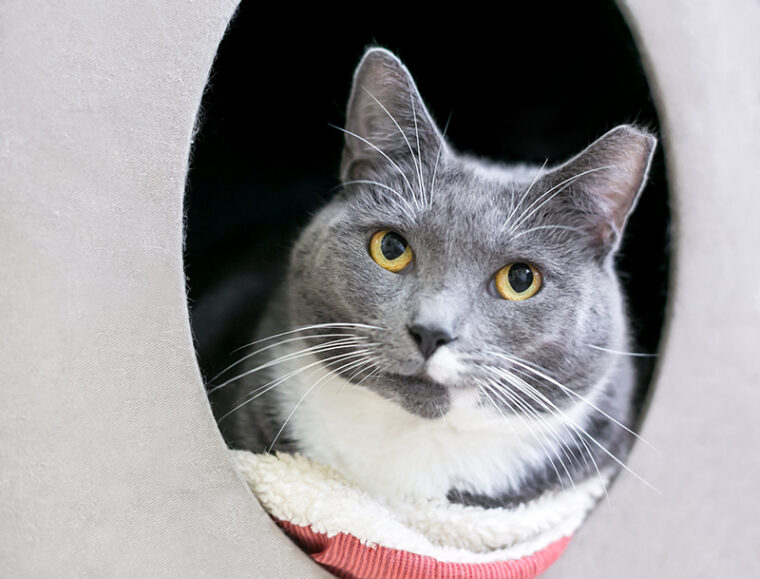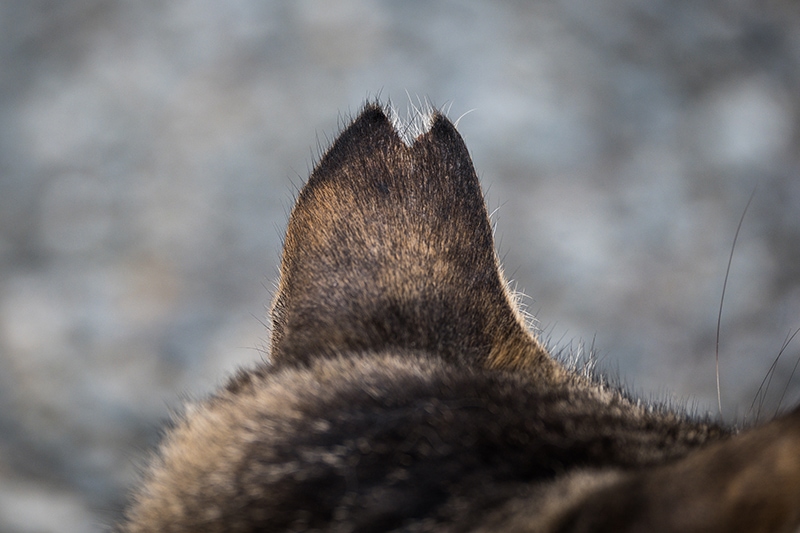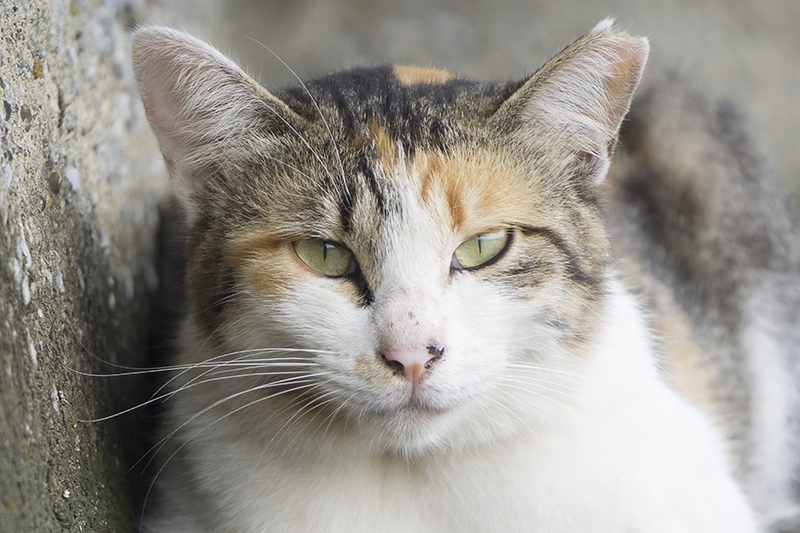
If you’ve seen feral or stray cats in your neighborhood with the tip of their ear squared off, there’s a good reason for it. Ear tipping is a universally recognized procedure to indicate that the cat has been spayed or neutered.
Learn more about cat ear tipping, the idea behind it, and how it helps with animal rescue efforts.
What Is Cat Ear Tipping and Why Is It Done?
Ear tipping removes about a centimeter of the tip of an adult cat’s ear. It’s done on feral cats, stray cats, barn cats, or cats that live outdoors in a community, not on friendly pet cats that may end up outside.
An ear tip indicates the cat has been spayed, neutered, and vaccinated. As the name suggests, feral cats have had little to no human contact, making it difficult for rescuers to get close to. The ear tip is easy to spot from a distance and universally recognized, so it avoids cats being trapped, transported, and stressed for a procedure that’s already been done.

Who Tips Cat Ears?
Virtually all cat rescue organizations will tip the ears of feral or community cats trapped as part of a Trap-Neuter-Release (TNR) or Trap-Neuter-Vaccinate-Return (TNVR) program or brought in by a good Samaritan. These cats are vaccinated against common diseases, especially rabies, and put under anesthesia for altering and ear tipping.
Some rescues use different ears to indicate the sex of the cat, but it’s not universal. Often, the right ear of female cats and the left ear of male cats are tipped.
Another benefit of ear tipping is that it helps communities keep track of the feral cat population. Some people feed and care for these cats, so they will notice if a new cat has joined the community.
It also helps humane and animal control officers track the cats seen by a veterinarian and will no longer add to the community via unwanted litters.
What Other Methods of Identifying Feral Cats Are Used?
Feral cat populations are a growing issue. Rescue organizations have tried other methods to identify cats that have been altered, but they’re generally not as effective as ear tipping.
Tattoos, which are used to identify horses, have been used to identify cats. Unfortunately, these are difficult to see without trapping and anesthetizing the cat, which defeats the purpose of quick identification.
Collars and microchipping—two common ways of identifying pets—have been used on feral cats. Collars can become tight or may cause injury if they’re caught on something, and they could simply fall off.
Like tattooing, microchipping requires a microchip scanner, so rescuers need to get close to the cat and trap it. Still, some TNR programs include microchipping for tipped cats.
Ear tags, which are used to track wildlife, have also been tried, but that has plenty of downsides. They may fall off or tear the cat’s ear, especially in a fight with another cat. They’re also prone to infections.
Finally, ear notches, which are similar to a tip, have been used. These are more difficult to differentiate from an injury from fighting, however. Ear tips are identifiable and rarely resemble an organic injury.

Does Ear Tipping Hurt the Cat?
Ear tipping is a minor procedure that’s done under anesthesia while the cat is undergoing spay or neuter surgery. It doesn’t hurt the cat, and there’s minimal bleeding involved. The cat will not feel discomfort from the procedure once it’s woken up.
What Should I Do If I See a Cat With a Tipped Ear?
If you come across a cat with an ear tip, it’s best to leave it be. This cat has already been altered and received vaccinations and veterinary care, so there’s no need to put it through the stress of capture unless it’s visibly unhealthy or injured.
Conclusion
The feral cat population has become a nuisance for communities, but these cats provide valuable rodent control and enjoyment for their community caregivers. Cats with tipped ears indicate that people are doing their part to care for these cats, and they will no longer produce kittens to contribute to the feral cat population.
Featured Image Credit: Mary Swift, Shutterstock







